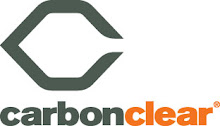But what does that mean for the average household or business user? How can we make the potential of renewable energy accessible to the average person?
Energy density provides one useful way to think about the contribution that renewables can make. Put simply, every power generation technology requires a certain amount of land (or ocean) area, whether it is a wind farm, solar PV panel, hydropower plant or coal-fired power station. Dividing annual energy production by that land area gives us a rough measure of energy density, measured in kWh per square meter per year.
According to an analysis performed by the U.S. National Renewable Energy Laboratory (NREL) on 172 large windpower projects, average power density on these windfarms averaged 3 megawatts per square kilometer, including the area around the turbines, access roads, and the like. Because wind is intermittent, annual energy output averages only around 30% of the theoretical maximum. This means these 172 wind farms had an average energy density of approximately 8 kWh/m2 per year.
In the UK, each square meter of ground receives around 1,000 kWh of solar energy per year. Solar PV panels convert this to electricity with an efficiency of around 10%, giving an energy density of 100 kWh/m2 per year.
The old Sizewell A nuclear reactor in the UK, by contrast, comprises a 99 hectare (990,000 square meter) estate, and had a rated power output of 427 MW. With a 90% annual availability and a electricity conversion efficiency of 35%, this boils down to an energy density of a bit more than 1,000 kWh/m2 per year.
To summarize:
- Large wind: approx. 8 kWh/m2 per year
- Solar PV: approx 100 kWh/m2 per year
- Nuclear: approx 1,000 kWh/m2 per year
That isn't the whole story, of course. The land area used for wind farms isn't completely consumed by the turbines. Wind turbines may be sited on farmland, or even in the open ocean and the area around them can continue to be used - by cows, fish, and the like. Similarly, the "land" consumed by PV panels actually may be the roof of a house or office building - not places where one would typically site a nuclear power plant and its supporting infrastructure!
Looking at the consumption side helps to make energy density an even more useful tool for understanding the potential contribution renewables can make.
According to the Energy Saving Trust, electricity consumption in UK households averages 3,300 kWh per year. (Gas consumption averages 20,500 kWh, but we'll focus on electricity for now.) With 76 m2 of useable floor area in the average house, this gives us 43 kWh/m2 per year of electricity consumption. UK offices average between 85 and 350 kWh/m2 per year, depending on age and layout.
Of course, we don't consume electricity across every square meter of our homes and offices. Most of that is used by a handful of power-hungry appliances. A highly efficient A+ rated fridge-freezer, for example, typically consumes 292 kWh of electricity per year, and takes up 0.25 m2 of floor space - or about 10% of a household's energy consumption on only 0.3% of its floor space. This gives an energy density of consumption of 973 kWh/m2 per year - almost as high as the production energy density from that old nuclear power station!
These types of calculations help us understand how much space we need to produce and consume electricity in different ways. It is clear that a refrigerator-sized solar panel will not power a refrigerator over the course of a year, but a house-sized solar array might provide enough electricity to power a house with a refrigerator (assuming it were a one-storey house, the array was properly oriented and one had a battery big enough to store the electricity for use when the sun was not shining). The rule of thumb in the UK is that you can generate about half your electricity with solar panels on the south-facing half of your roof, which sounds about right for a typical two-storey house.
And under the proper conditions, solar PV just might be enough to power an entire office building, despite the higher energy consumption per square meter. The image below is an artist's conception of Seattle's Bullit Center, an office building that is planned to be energy self-sufficient:
Making the most of renewable energy, then, is a two-way street. We can continue to push for technical advances that improve the energy density of power generation systems, through more efficient wind turbine blades, advances in solar cell manufacture, more careful siting to improve the amount of wind or sunlight we can capture and more.
We can also get a better balance between production and consumption by reducing the energy density of our homes, offices and appliances. In some cases that means redesigning how we use these items so that they require less energy in the first place: bigger windows to reduce lighting bills, deciduous trees on the south facing side of buildings to allow more of the winter sun to strike the building, etc. In other cases it means increasing efficiency by insulating buildings, switching to less power-hungry appliances, and optimizing their use.
At Carbon Clear, we support the development of ambitious emission reduction targets to combat climate change. As the discussion above shows, the energy density of cleaner renewable energy sources is sufficient to meet many end users' needs. Their potential is likely to grow as we continue to pursue energy technology improvements and we drive further efficiency gains where we live, work and play.



